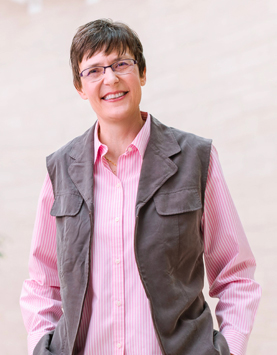by Buck Institute
November 29, 2022 . BLOG
Scientist Spotlight: Birgit Schilling, PhD
 Name a research project going on at the Buck Institute and it’s likely that Birgit Schilling is a part of it. The Buck scientist has an array of research projects spanning the wide range of things that can go wrong as we age, from joint problems to kidney disease to breast cancer.
Name a research project going on at the Buck Institute and it’s likely that Birgit Schilling is a part of it. The Buck scientist has an array of research projects spanning the wide range of things that can go wrong as we age, from joint problems to kidney disease to breast cancer.
“I love to bring projects together that initially appear to have nothing to do with each other,” says Schilling. As an example, she points out that 40 percent of metastatic breast cancer infiltrates bones. “I thought it would be cool to combine breast cancer with all of our bone projects,” so she wrote a proposal to study secondary metastatic bone cancer in breast cancer patients.
Another collaboration spawned when Schilling spoke with a colleague about the fact that brittle bones are associated with Alzheimer’s disease, but nobody knows why. That conversation led to a study exploring the connections between the bones and the brain.
What interests Schilling most is how cells communicate with one another, the cross-talk between different tissues. To study these interactions in human cells requires solid relationships with surgeons who have the ability to provide samples from their patients. “Connecting with people who provide the very precious human tissue is the only way we can do studies that will hopefully have a really high impact,” she says. Toward that end, she has established a number of collaborations with surgeons and clinicians, locally and worldwide.
Beyond her own enthusiasm and networking skills, the key to Schilling’s ability to address a variety of aging-related topics is the Buck’s arsenal of modern mass spectrometers, which she shows off as proudly as if they were her children. The versatile instruments hum along analyzing samples 24 hours a day, every day, in the Mass Spectrometry Core, which Schilling directs.
The tireless machines give scientists a way to “analyze a whole lot of things really quickly,” she says, by surveying thousands of proteins together in a single sample, in only an hour or two. In essence, they provide a “molecular readout,” which is the individualized signature of a sample that incorporates the multitude of changes (are the proteins modified, degraded, clumping together, more abundant, or less?) that can occur in our cells with aging or certain diseases. Identifying these changes, Schilling explains, is critical for developing more fine-tuned diagnostics, precise treatments and accurate monitoring for just about any condition.
“We want to distill out the molecular changes that really mean something,” she says.
Schilling’s career examining all kinds of human diseases was not a direct path; it all began with a bug. After studying chemistry in her native Germany, her diploma research focused on bark beetles. Specifically, she was analyzing their pheromones to understand how to develop traps to attract the insects so they could be removed from trees.
“But I really wanted to do more with human health,” she says, so for her postdoctoral studies she came to UCSF, using her mass spectrometry skills to analyze the venom of the beautiful but deadly cone snails. When the Buck Institute opened in 1999, she jumped at the opportunity to apply her expertise with molecular tools to address issues of aging. She arrived in 2000 to manage the mass spectrometry facility (with Dr. Gibson) and later formed her own laboratory, which today has 10 members.
“I like to focus my lab’s projects on things I care about,” problems that have affected my family, Schilling says. Like most people’s families, hers has experienced a list of ailments in their lifetimes, including breast cancer, kidney disease and osteoarthritis. “I am super enthusiastic that maybe I can find out something that will help them,” she says.
“I have so many projects spanning the range of what fits into aging,” she says. “I find it fascinating that aging comprises so much.”

SHARE